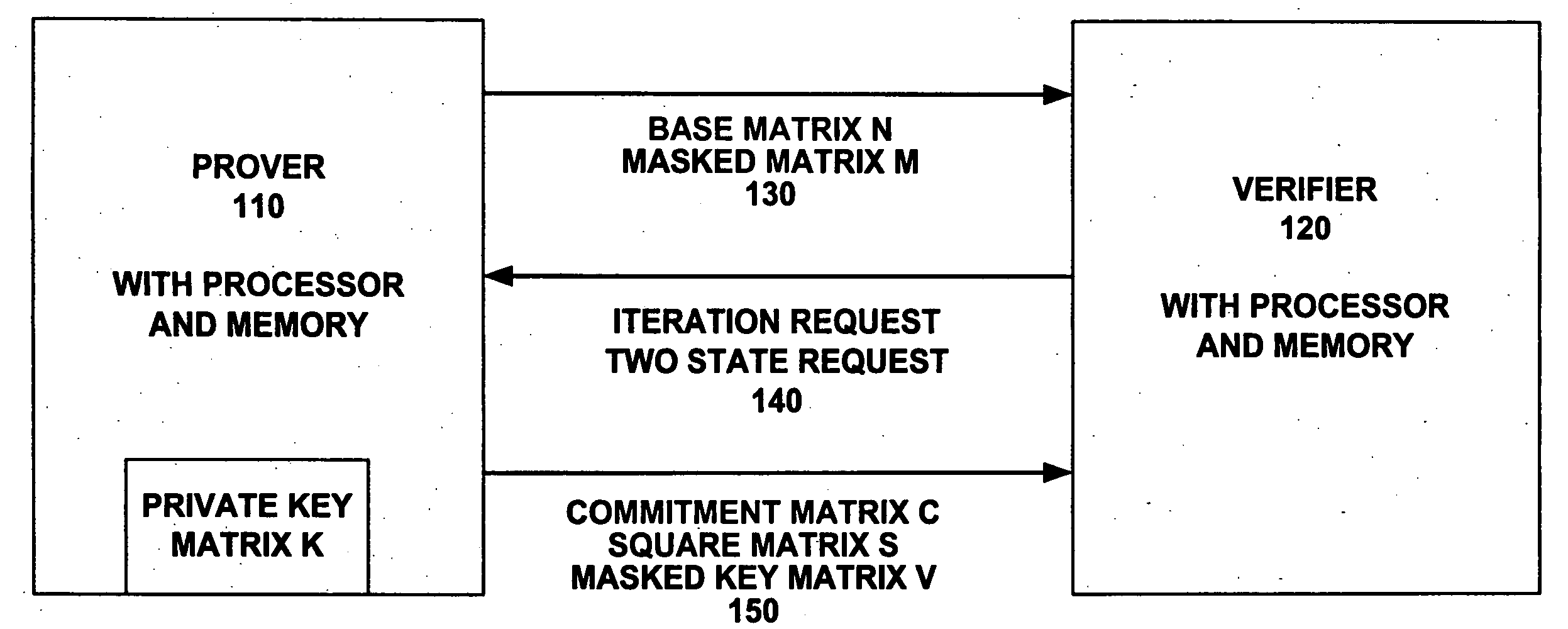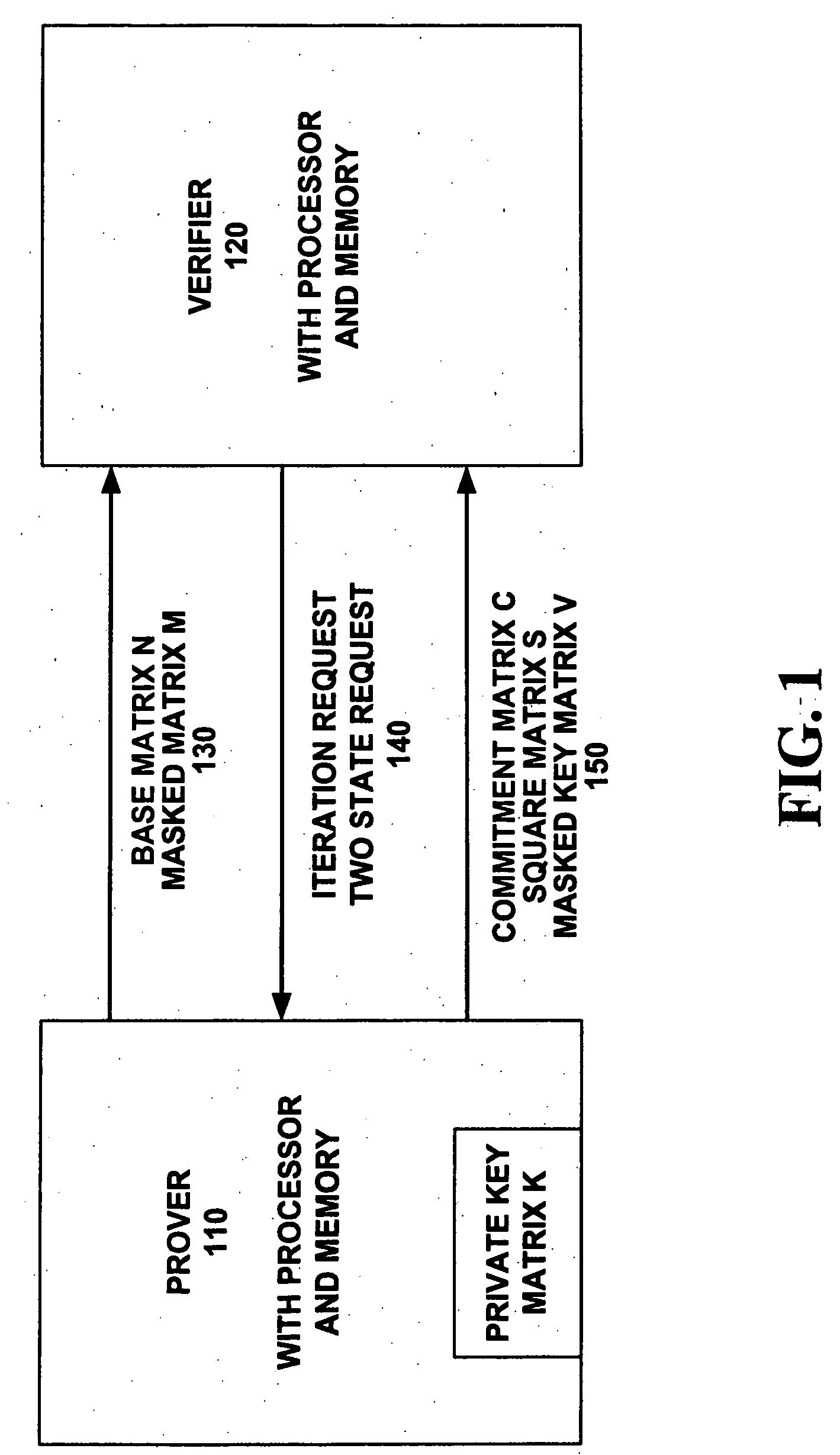Method for zero-knowledge authentication of a prover by a verifier providing a user-selectable confidence level and associated application devices
a technology of confidence level and verification method, applied in the field of authentication, can solve the problems of low confidence level, inability to switch between, waste of processing resources, etc., and achieve the effect of reducing doubt in the result and high confidence level
- Summary
- Abstract
- Description
- Claims
- Application Information
AI Technical Summary
Benefits of technology
Problems solved by technology
Method used
Image
Examples
Embodiment Construction
[0032]FIG. 1 illustrates a schematic block diagram of a prover 110 communicating with a verifier 120 to perform authentication in an iterative fashion. The authentication of the prover 110 by the verifier 120 uses same size, square matrices filled with binary digit entries.
[0033] Prior to an iteration, the prover is provisioned with certain matrices which are assigned to the prover 110 for all iterations. A private key matrix K is established for the prover 110. The private key matrix K is kept private to the prover 110 and not revealed to the public or to the verifier 120. In one preferred embodiment, the private key matrix K can be created and installed in secure memory during manufacture, say at a factory. Alternate embodiments allow the generation of the private key matrix K at other times during a provisioning state.
[0034] A base matrix N is picked and a masked matrix M is calculated for the prover 110 based on the private key matrix K and the base matrix N. In the preferred ...
PUM
 Login to View More
Login to View More Abstract
Description
Claims
Application Information
 Login to View More
Login to View More - R&D
- Intellectual Property
- Life Sciences
- Materials
- Tech Scout
- Unparalleled Data Quality
- Higher Quality Content
- 60% Fewer Hallucinations
Browse by: Latest US Patents, China's latest patents, Technical Efficacy Thesaurus, Application Domain, Technology Topic, Popular Technical Reports.
© 2025 PatSnap. All rights reserved.Legal|Privacy policy|Modern Slavery Act Transparency Statement|Sitemap|About US| Contact US: help@patsnap.com



